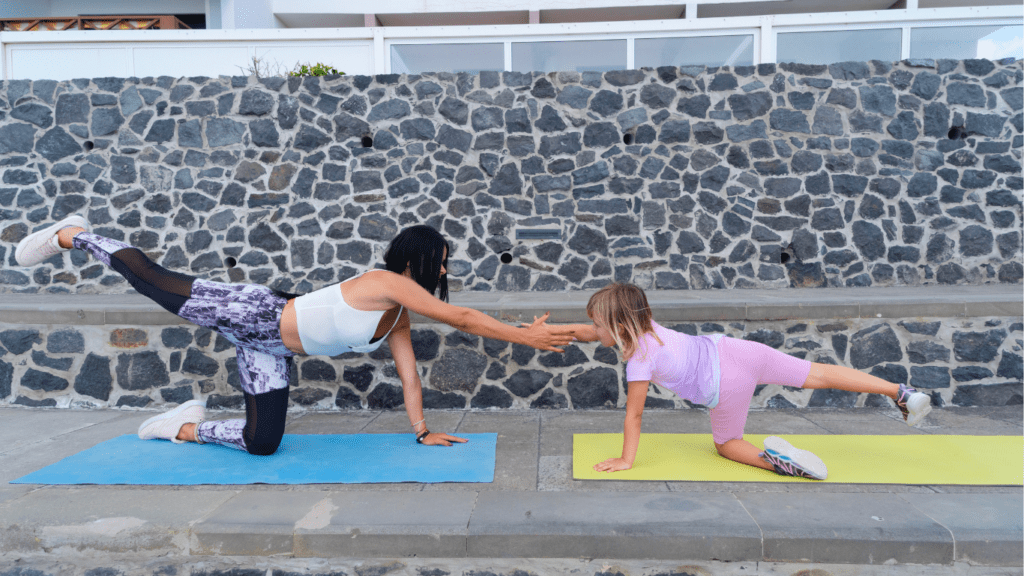Understanding Mindfulness
Mindfulness involves staying present and fully engaging in the current moment. This practice can greatly benefit mothers managing daily stress.
What Is Mindfulness?
Mindfulness means focusing attention on the present moment while acknowledging and accepting one’s feelings and thoughts. It stems from ancient meditation practices but is now widely adopted for mental well-being. For example, during a chaotic morning, a mom practicing mindfulness might pause, take deep breaths, and concentrate on her senses to regain calm.
Benefits of Mindfulness for Moms
Mindfulness offers several benefits for moms:
- Reduced Stress: Practicing mindfulness can lower stress levels by helping moms stay grounded.
- Better Emotional Regulation: It enables moms to manage their emotions more effectively.
- Improved Focus: Mindfulness boosts concentration, which is crucial when juggling multiple tasks.
- Enhanced Well-Being: It promotes overall mental and emotional health, making everyday life more enjoyable.
These advantages can make a significant difference in a mother’s daily life, fostering a sense of balance and peace.
Managing Stress Through Mindfulness
Mindfulness offers practical tools for moms to manage stress, fostering a sense of calm and presence. Let’s explore techniques to reduce stress and ways to create a mindfulness routine.
Techniques to Reduce Stress
- Deep Breathing Exercises
Focusing on deep, slow breaths helps calm the nervous system. I find that inhaling for four seconds, holding for seven, and exhaling for eight can quickly reduce tension. This practice helps redirect focus to the present moment by centering attention on the breath. - Body Scan Meditation
This technique involves mentally scanning the body from head to toe, acknowledging any tension or discomfort. I lie down in a quiet space and spend a few minutes on each body part. Recognizing areas of stress allows me to release tension consciously. - Mindful Walking
Walking mindfully means paying attention to each step and the surrounding environment. When I walk, I notice the sensation of my feet touching the ground, the sounds around me, and the feeling of the air. This practice grounds me in the present. - Gratitude Journaling
Daily journaling about things I’m grateful for helps shift focus from stress to positive aspects of life. Writing three things each evening that brought joy or peace helps enhance my emotional well-being and reduces stress.
- Set a Dedicated Time
Consistency is key. I find mornings ideal, as they set a peaceful tone for the day. Even five minutes of mindfulness practice can make a significant impact. Choose a time that fits seamlessly into your daily schedule. - Designate a Quiet Space
Create a tranquil environment free from distractions. I converted a small corner of my bedroom into a mindfulness nook, adding cushions and calming decor. A dedicated space enhances the practice’s effectiveness. - Use Guided Meditations
Apps and online resources like Headspace and Calm offer guided mindfulness sessions. I often rely on these tools to provide structure and variety to my routine, making it easier to stay committed. - Incorporate Mindfulness into Daily Tasks
Integrating mindfulness into routine activities like cooking or cleaning can enhance presence and reduce stress. For example, while washing dishes, I focus on the sensation of water and the smell of soap. This makes mundane tasks more engaging and less stressful.
By embedding these techniques and routines into daily life, moms can effectively manage stress and stay present.
Staying Present with Mindfulness

Mindfulness helps moms stay present and fully engage in each moment. It’s a powerful tool to navigate the demands of motherhood while maintaining inner peace.
Practical Exercises for Daily Life
Daily mindfulness exercises can greatly enhance a mom’s ability to manage stress. Here are some practical tips:
- Deep Breathing: Inhale deeply through your nose for a count of four, hold for four, and exhale through your mouth for four. Repeat this cycle five times a day.
- Grounding Techniques: Notice five things you can see, four you can touch, three you can hear, two you can smell, and one you can taste.
- Mindful Eating: Focus on the taste, texture, and aroma of each bite. Avoid distractions like TV or smartphones during meals.
- Body Scan Meditation: Lie down, close your eyes, and mentally scan your body from head to toe, noting areas of tension.
- Gratitude Journaling: Write down three things you’re grateful for each evening to cultivate a positive mindset.
Incorporating Mindfulness into Parenting
Embedding mindfulness into parenting can strengthen your connection with your children. Here are some strategies:
- Active Listening: Give your child full attention during conversations. Make eye contact, and respond thoughtfully, showing genuine interest.
- Shared Mindful Activities: Engage in activities like drawing, nature walks, or simple yoga exercises with your children, focusing on the present moment.
- Mindful Play: Be fully present during playtime. Notice your child’s expressions, movements, and joy, setting aside worries about chores or work.
- Bedtime Rituals: Incorporate calming stories, gentle music, or guided relaxation exercises during bedtime to wind down the day together.
- Emotional Check-ins: Regularly ask your children about their feelings. Respond with empathy, teaching them to acknowledge and manage their emotions constructively.
Applying these mindfulness techniques daily can significantly reduce stress and boost your overall well-being as a mom.
Common Challenges and How to Overcome Them
Balancing the demands of motherhood with mindfulness can seem daunting, but overcoming common challenges with practical strategies makes it manageable.
Balancing Mindfulness with Busy Schedules
Finding time for mindfulness can be difficult for a busy mom. Integrate mindfulness into existing routines to maximize efficiency. For example, practice deep breathing while preparing meals or use a body scan meditation during children’s nap times.
Prioritize short, consistent mindfulness sessions. Even five-minute practices can make a difference. Use mindfulness apps like Headspace or Calm for guided sessions that fit into any schedule. Schedule mindfulness as a non-negotiable part of the day to ensure it gets the necessary attention.
Dealing with Setbacks and Frustration
Mindfulness requires patience and persistence, which can sometimes lead to setbacks and frustration. Remember that it’s normal to miss a session or feel distracted. Recognize these moments without judgment and gently refocus.
When frustrated, employ grounding techniques to regain composure. Techniques like focusing on the senses or mindful breathing can center thoughts and emotions. Reflect on progress by keeping a mindfulness journal, noting successes and areas for growth. This helps maintain perspective and fosters resilience.
Embracing these strategies ensures that mindfulness becomes a sustainable practice, even in the context of a busy mom’s life.
Tools and Resources
Moms often benefit from various tools and resources to support their mindfulness journey. These options can make mindfulness practices more accessible and sustainable.
Recommended Apps and Books
Using mindfulness apps and reading relevant books can enhance a mom’s ability to stay present. Apps like Headspace, Calm, and Insight Timer offer guided meditations that help with stress reduction. Books such as “The Mindful Mom-to-Be” by Lori Bregman and “Self-Compassion” by Kristin Neff provide valuable insights into integrating mindfulness into motherhood. These resources can fit into a mom’s busy schedule, offering flexible options for practice.
Support Groups and Communities
Connecting with other moms through support groups and mindfulness communities can provide encouragement and shared experiences. Platforms like Meetup host local mindfulness groups where moms can join meditation sessions and workshops. Online communities such as Mindful Mamas Club offer forums, webinars, and group meditations that cater specifically to mothers. These support networks create a sense of belonging and offer practical tips for maintaining mindfulness practices. Being part of a community can help sustain long-term mindfulness habits.
By utilizing apps, books, support groups, and communities, moms can effectively integrate mindfulness into their lives. These tools provide diverse and accessible options to cultivate a mindful lifestyle amidst the busy demands of motherhood.




